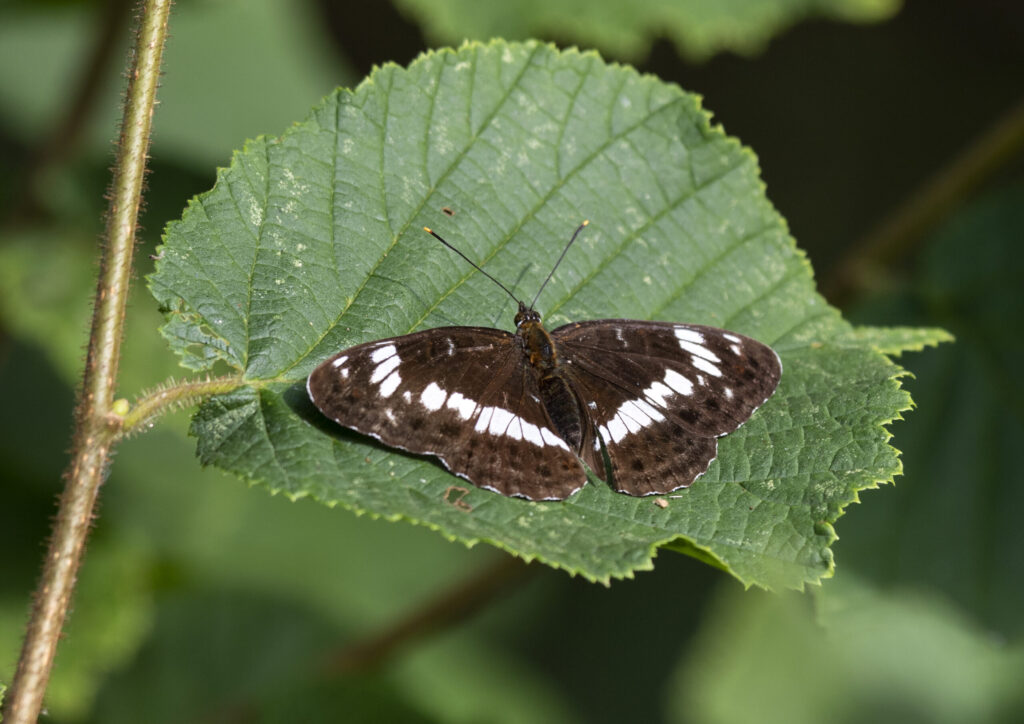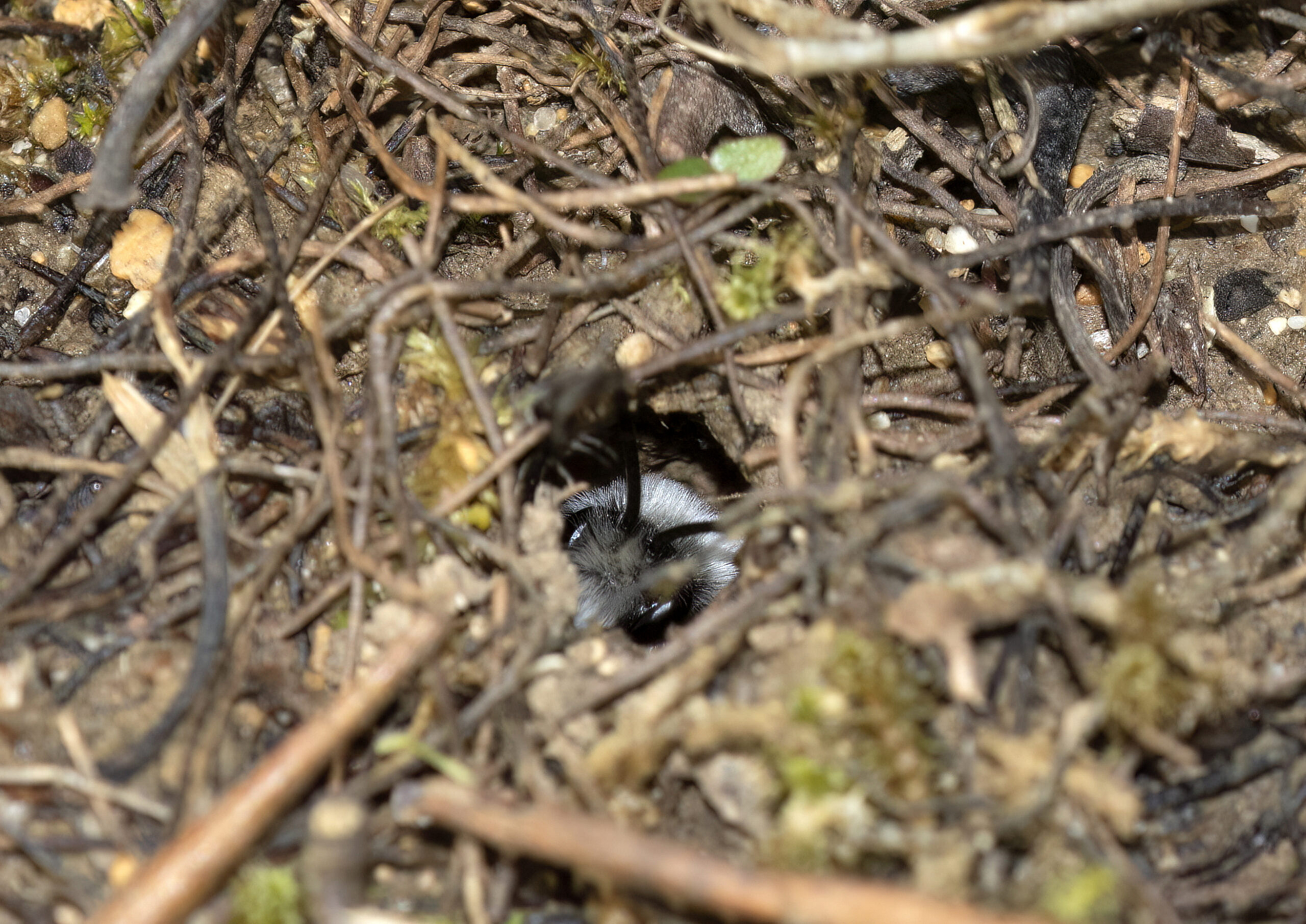Ravensroost wood, Wiltshire.
For all the effort that I put into it, I can never get successional flowering to work in my garden. Yet here in the woodland, it happens automagically; not just seasonally, but from year to year as well. This time last year, it was the hemp agrimonies that dominated, their clusters of pink-purple flowers festooned with nectaring hoverflies and the occasional white-letter hairstreak butterfly dropping in from the wych elms behind. This year, the hemp agrimony is muted, still to come into its own, and the banks on either side of the track are instead a confection; candyfloss clouds of creamy meadowsweet, interspersed with sharp, columnar spikes of purple loosestrife, and cheerful punctuations of ragwort. In North Wiltshire’s continuing drought, the faint pink of the dog rose has overtaken the bramble, whose flowers and fruits are shrivelled and unpromising.
I am five minutes in before I see the first of the butterflies that I am seeking. Resting in the deep gloom on the edge of a coppiced hazel, the wobbly white line curving across its wings stands out against the velvety blackness of the rest of it. This is a strait-laced, no-nonsense Victorian butterfly, without frivolity or gaiety, and I am relieved to see it, as there were fears that it was dying out in this woodland. As a child, I never understood that the white admiral was a woodland butterfly, a shade lover, and I sought it in vain in the sunlit meadows where its cousin the red admiral flies. Elusive, and ephemeral, it only occasionally stops to display its monochrome beauty. You rarely see more than one or two at a time, but just yards further on, I see another. And another. I count seventeen in all, a record number, driven by the lack of bramble flowers to hunt for nectar anywhere they can find it. For once, they are competing in numbers with the dazzling orange flashes of the silver-washed fritillaries that also abound here. The fritillaries will be glinting in shafts of sunlight well into August, long after the white admirals are gone; then they too will fade and leave it to the second broods of yellow brimstones and common blues to see the woodlands into winter. Already the next generation of white admirals are starting their journey, the spiky geodesic domes of their eggs laid on honeysuckle leaves, and I wonder what colours they will see when they emerge next year.





Social Profiles